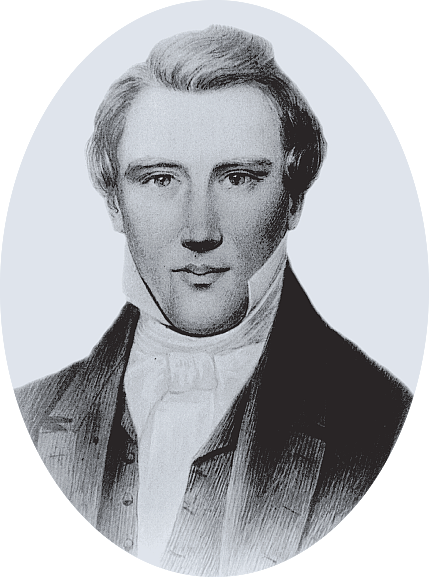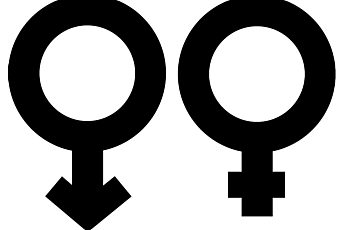Make Yourselves Gods

On April 5th, 1841, a young woman stood beneath an elm tree in far western Illinois. This was Louisa Beaman, twenty-six, and at this point in her life an orphan. Her father had died in Kirtland, Ohio, in 1837; her mother, only a few months before, in 1840. In the aftermath of that latter calamity, Beaman had gone to live with her sister Mary, and with Mary's husband, Joseph Bates Noble and it was that man, Joseph Noble, who now stood before her. But not only him.
Joseph Noble was a devout Mormon. He had moved from New York to Kirtland in 1834, with the earliest Mormon émigrés, had suffered the reversals and disappointments—indeed the terrors—of Mormon displacement. (During the ghastly Missouri War of 1838, governor Lilburn Boggs issued his infamous "extermination order"—"The Mormons must now be treated as enemies, and must be exterminated or driven from the state if necessary for the public peace"—and the Mormons were in fact massacred, at Haun's Mill.) But in 1840 something extraordinary happened to Joseph Noble. As if in recognition of this longstanding devotion, the prophet himself had shared with him a momentous secret. None other than Joseph Smith (author, prophet, leader) had personally instructed him, Noble reported years later, in "the principle of celestial or plural marriage, or a plurality of wives." Smith's startling request was that Noble perform the sealing between Smith and Noble's orphaned sister-in-law, Louisa. This would be, according to later testimony, "the first Marriage Ceremony according to the Patriarchal order of Marriage ever performed in this dispensation." (Smith appears to have been married polygamously to two other women by this time.) The honor of the request could not have been lost on Noble. "In revealing this to you," Smith is reported to have said to Noble, "I have placed my life in your hands, therefore do not betray me."
Noble did not betray the prophet, though his treatment of his orphaned sister-in-law is a matter considerably more equivocal. In what Todd Compton calls the "family tradition" of her future husband, Brigham Young, Beaman is said to have "asked the Lord in fervent prayer for a testimony concerning the principle." In this version, such testimony was given to her, and she accepted it.
And so she found herself under an elm tree, on a day in early April, standing before her brother-in-law and the prophet Joseph himself. And yet this was to be a queerer than ordinary wedding, and not only because it was by design a rebuke to, and a supersession of, any merely civil rite, or even because the groom was himself already a married man. In part as a measure of the severity of these disruptions of the normative frame of antebellum social and sexual life, Louisa Beaman attended her marriage in disguise. But not just any disguise. In a journal entry decades later, Franklin D. Richards would write, "Br. Joseph B. Noble being the master of ceremonies was present and During the visit related that he performed the first sealing ceremony in this Dispensation in which he united Sister Louisa Beaman to the prophet Joseph in May—I think the 5th day in 1841 during the evening under the Elm tree in Nauvoo. The Bride disguised in a coat and hat." Louisa Beaman—who would go on to be a figure of defining importance in early Mormon feminism—was married to the prophet, in "the first Marriage Ceremony according to the Patriarchal order," disguised as a man.
Mormonism, as this delectable tableau suggests, is one of those historical phenomena always over-performing itself, disturbing the parameters that separate the fictive from the putatively real—recalling to us, that is, the historicity of our categories. (Smith has something of this in mind when he writes, "No man knows my history. I don't blame you for not believing my history. If I had not experienced what I have, I could not have believed it myself.") The book I am now finishing tells the story of the Mormons from the period of their emergence as a dissident sect, notable as much for their post-Protestant heterodoxy as for a dramatically non-normative sexual imagination, through to their renunciation of polygamy at century's end. That 1890 renunciation, with which the Mormons at last attained statehood for Utah—transforming them into reluctant monogamists and enfranchised U.S. subjects—marked, too, the culmination of a fantastically vexed history, in which the Mormons had appeared by turns as heretics, sex-radicals, American Mohammedans, racialized refugees, anti-imperialists, colonizers, and eventual white nationalists, protected in their citizenship less by the secular state's offer of official "toleration" than by the complex wages of a sovereign whiteness. The pitch of the book, you could say, is that the Mormons were, in certain precise ways I wish to specify, deviant, queer—a queer populace emerging before the advent of erotic categories like hetero- and homosexuality—and that this is so much the case that we can profit greatly, both historically and conceptually, by approaching them through the idioms of queer theory, queer historiography, and queer critique. Marked out in their committed derangements of normative intimacy as not only perverts but, in that, as dubious white people, Indian-like, Asiatic, Mohammedan, the Mormons make for an especially vivid chapter in the racial history of American sexuality.
But there's more. For as I try to show in some detail, Mormon depravity was read most commonly as both cause and effect of a deranged practice of what I will call bad belief: a failure, in all, to hew to the coordinates of religion as they came to be assembled under the aegis of secularism. The book is in this respect a kind of polemic. Speaking in concert with a wealth of practitioners of postsecular critique (Talal Asad, Saba Mahmood, Tomoko Masuzawa, Joan Scott, John Modern), the book uses the story of the Mormons to vivify a counter position about what secularism is: not what results from the dissolution of religion in public life; not the happy extirpation of benighted orthodoxy; nor quite a climate of pluralistic fragilized belief, or scene of fair play among theological options; nor again a sociality anchored in a capacity for adjudication and free choice among the multiplying possibilities for belief in a rationalizing and therefore disenchanted world and, therefore, a liberated world. The unceasing attacks on Mormonism, and the specific terms in which they were prosecuted, bring into exceptional focus a contrary rendering of secularism as, rather, a "normative sociality" and "disciplinary structure," one intimately involved in the harnessing of the terrain of ritual, practice, belief, and spirit to the imperatives of a settler colonial empire coming to understand itself more and more entirely in the framework of a redemptive liberalism. (Secularism, I will suggest, is a sententious story imperial liberalism likes to tell about itself.) So secularism, in this iteration, will mark out the styles of adapted, enforced compatibility with liberal rationality that allow a given set of belief-practices to come into legibility as "religion" at all, rather than as, say, credulity, fanaticism, superstition, backwardness, "fundamentalism," or any of the other sub-varieties of bad belief.
Secularism, I'm going to suggest too, has flesh and sinew, has a body; the radiant body of early Mormon theology does not accord with it. Again, these interwoven, mutually indicating perversions—bad sex, bad belief—were racializing: made up, in fact, the very grammar, the stuff and substance, of nineteenth century racialization. Listen to Representative Justin Morrill, using polygamy and its counterfeited religiosity to argue against Utah statehood in 1856: "Under the guise of religion this people has established and seek to maintain and perpetuate, a Mohammedan barbarism revolting to the civilized world." The Mormons help us bring into focus not just an economy, or a discursive regime, but a biopolitics: a technology of power that (as Foucault renders it) optimizes the life of populations, suturing the self-disciplining of individual bodies to larger groupings made coherent through their statistical regularities as projected over gulfs of time larger than the life-span. Crucially, biopower differentiates sharply among those orders of life that improve the species, and so are meant to flourish, and those that, because they are figured as threats to the health of vigor of a "general population," are marked out contrastingly as degenerate, unimprovable, expendable life. The story of the Mormons, who were only barely not exterminated in nineteenth-century America, throws into stark relief what I call the biopolitics of secularism.
(If you want to tell a story about the disciplinary force of secularism, the Mormons are a great object: they begin as a pure form of bad belief and emerge in the following century as the paradigmatic case of good religion. My book is about what has to happen to make that so.)


